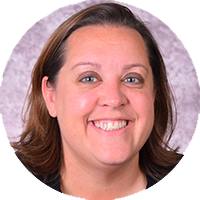
“The true meaning of life is to plant trees, under whose shade you do not expect to sit.” – Nelson Henderson
Transforming schools and districts from industrial models to student-centered ones is bold, noble, worthy work that requires a sustained effort over a long period of time. Typically, such movements begin with one bold, visionary leader or a small, committed team of courageous change agents, but deep and lasting education transformation has to move beyond a personality-driven endeavor, to a systemic commitment to a better way of designing learning with kids. It has to evolve from a special project, to an ingrained holistic, student-centered approach which changes the way the business of school has historically been done. While the desire to change school may start as a movement born from impatience with the status quo, the road to full transformation is a long and winding one that requires tenacity of an entire system, not just one courageous leader or team.
Movements begin with changing hearts and minds. Key board members, visionary superintendents, courageous principals, dedicated district staff, and rock star teacher leaders can be the early champions, but they may not be the ones who carry the work for the 10 to 15 years required for deep, systemic change. In order to establish meaningful roots in any movement, visionary “seed-planters” could consider some advice borrowed from practitioners who have planted trees under which they might never sit.
Prepare the soil
Commit to doing the work needed to gain commitment to shifting the school experience, not just garnering compliance. This looks like challenging old ideas, widening perspectives through travel and research, hearing from educators who are challenging the status quo, and most importantly, listening to what kids have to say about their school experience. Are they challenged? Engaged? Agents of their own learning? Bring that conversation to the fore of decision-making, especially in hiring, resource allocation, and communication, and invest the time in collective reflective dialog before trying to turn school upside down with radical change.
Cultivate demand in the community
Engage the community in the discussion to build deep roots and cultivate demand for a new school experience. This takes the form of a community “Portrait of a Graduate” conversation about what students should know and be able to do, ongoing dialog with post-secondary schools and employers articulating the range of success skills graduates need, and making learning transparent so everyone sees the learning evolve from outdated industrial models we all know to the 21st-century models we need.
Let 1,000 flowers bloom
Seed innovation at the level of the school, then examine the practices that emerge, decide how to scale and codify it, and help later implementers with best practices while seeding the next generation of innovations. Short cycles of iteration over a sustained period of time, based on improvement science yield an increasingly iterated model of school, as opposed to the initiative fatigue that frequently accompanies large scale, one-off efforts.
Use the right tools for the job
Identify which tools best measure success of innovative school work and make sure you include evaluation into your early plans. Commit to broadly defining student and school success with a range of metrics, including traditional and non-traditional measures. Being able to answer the questions, “Are we getting better at this, and how do we know?” is essential to long-term success.
Grow your own
Develop your own pipeline of transformational classrooms, buildings, districts, and leaders aligned to new models of learning. If your school or district values lifelong learning, then model it, support it, and devote ample time and resources to it. Don’t assume teachers and leaders will come to you with that mindset. Schools and districts may initially bring in external expertise in order to build internal capacity for innovative strategic planning and instruction, but the end goal should be to align internal professional and leadership development to the transformational work in order to sustain it in the long term. Leadership development, for example, may focus on helping educators lead and manage the change process, engaging the community in discussions about redesigning learning, facilitating short cycles of iteration, and developing new metrics of success.
Plant a community garden
Community gardens are shared spaces that are collectively cared for by a group of people. There are many farmers who invest (and therefore have a stake in) the shared success of the garden. The network of farmers supports each other, and the same is true of educational movements. Internal and external networks of like-minded and similarly committed colleagues share best practices, encourage one another, and tend to the work when a community member needs a helping hand.
Plan for seasons to change
Any long-term effort will experience spring seasons of fast growth and winter seasons when things feel dormant. Taking the long view on the seasonality of movements from the outset will help moderate expectations and help prevent burnout and exhaustion.
Being a seed-planter is only part of the challenge of growing anything, whether it’s a tree or a transformation movement in education. The collective yeoman’s work of the nurturing process during the early, most tenuous years requires intensive, sustained effort, but tending to and planning for the long term makes growth more likely to take root and bloom, even if the original tree-planter isn’t there to see it to full fruition. This is key if we hope to keep the gardens of innovation growing long after the seed planters leave, either to nurture another garden or plant new trees for other ed reform to grow elsewhere.

